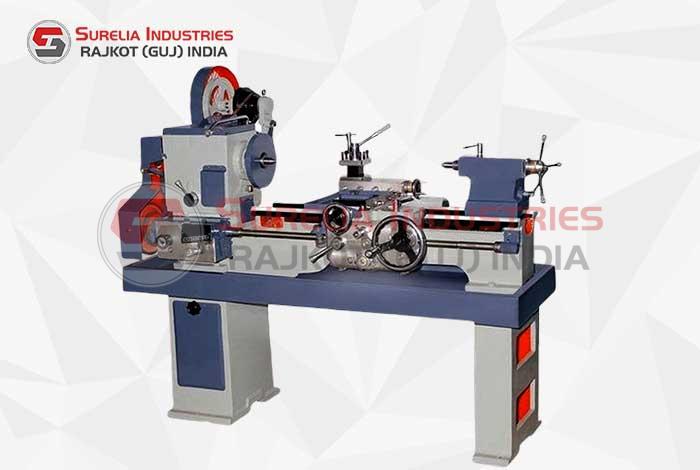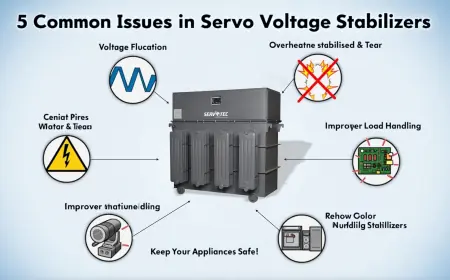Mistakes to Avoid While Using Light Duty Lathe Machine: Beginner’s Guide

The light duty lathe machine is a versatile instrument for shaping the materials. They are used for shaping, turning, and cutting a diverse range of workpieces. The light-duty lathe machine rotates the workpiece on its axis allowing for accurate material removal and giving it a desired shape. Its major components are the bed, headstock, tailstock, carriage, saddle, chuck, and tool rest among others. It is a light-duty lathe machine designed for small-scale jobs at garages and small-scale industries.
What is a Light Duty Lathe Machine?
It is a small and compact machine that is designed for small-time operations like drilling, threading, and shaping of various materials like metal, plastic, or wood. It is simple to use as compared to the heavy-duty lathe machine with less complex components with a basic control system and design.
Common Mistakes to Avoid While Using a Light-Duty Lathe Machine
Though the machinery is easy to use and light- weight but still many operator beginners commit several mistakes that can impact the efficiency of the operations.
-
The Machine is Too Fast:
The lightweight lathe machine can function at various speeds which can be set through the control manual. It also depends on the kind of material that you will be feeding into the machinery. Changing the speed of your lathe results in cutting the threads too fast, though it will improve the production rate the quality of operations will deteriorate. So, it is essential to maintain the right speed of the lathe machine based on the kind of material the machine is working on. It can easily lose control when the lathe is working at a fast speed. This makes the cutting process more dangerous and even more difficult.
-
Cutting Slowely:
Not just the fast cutting but the slow cutting can also increase the friction, causing excess heat. So, having an accurate speed will lead to precise cuts which will lead to production of the high-quality products. When the machine is set to slow, it can hamper the performance and will also damage the workpiece. The added friction will also increase the risk, mainly when working with wood, increasing the chances of injuries to the operator.
-
No Maintenance:
It is essential to maintain the lathe machine to ensure that it continues to perform efficiently. If you do not lubricate the machinery or check for wear and tear from time to time, it will not only deteriorate the performance of the machinery but you will also end up losing your safety certification. The faulty lathes machine can lead to costly repairs, thus enhancing the cost of operations.
So, after every use, the machine should be cleaned and inspected to reduce the chances of problems during operations. You can also hire a professional for maintenance if you are not sure how to properly maintain the lathe machine.
-
Incorrect Height Setting:
Placing the lathe machine at an appropriate height is also essential while running the cutting operations. What is more, the machine should be placed according to the material that you are cutting. If your workpiece is a metal, the machine should be positioned to the chunk’s right and at height middle. If your machine is set at the incorrect height, it can affect the dimensions of the slashing, impacting the accuracy.
-
Loose Tailstock:
It is one of the major components of the lightweight lathe machine and if it is loose it can impact the efficiency of the operations. So, before feeding the workpiece into the chunk, ensure that the tailstock is tightly intact in its place. You can do this by checking and screwing tight all the bolts tight. It will ensure a precise and smooth finish.
-
Safety Regulations:
The lathe machinery is a highly powerful tool equipped with sharp blades, so the operator must know how to use the machine properly. During operations, it's essential to ensure that all safety precautions are followed to create a safe work environment. Additionally, wearing protective gear will reduce the risk of injury. Lastly, make sure that the machine is in good condition whenever you use it, if you ignore the condition of the machine, it can prove to be fatal in the future.
Wrapping Up…
The above-mentioned precautions will help beginners to understand the operations of the cutting equipment better. Highly precise tasks as per the user’s requirement can be performed with this machine. It will ensure smooth and safe operations. However, you need to have an efficient and sturdy machine to enjoy the best cutting operations. Why look elsewhere when you have the most reliable brand ‘Surelia Industries’. The team of experts will help you choose the best machine with their extensive understanding and ensure smart solutions for your business.
Frequently Asked Questions:
-
What is the Light Duty Lathe Machine?
A light-duty lathe machine is designed for executing small-scale jobs like cutting, drilling, turning, and metal spinning among others. It enables the operator to give the desired shape and size to the workpiece.
-
What are the Best Workpiece Materials for Light Duty Lathe Machine?
It is best for soft materials like aluminum, brass, copper, plastic, and wood among others. They are ideal for light- duty operations.
-
What is the Working Principle of the Light Duty Lathe Machine?
The machine works on the simple principle of rotating the workpiece against the cutting tool to give it the desired shape.
-
What are the Factors to Consider Before Choosing the Light Duty Lathe Machine?
These are some of the factors to consider before choosing a light-duty lathe machine.
-
Swing diameter
-
Spindle bore size
-
Motor power
-
Feed rates
-
Distance between the centers
-
Available accessories
-
What are the Limitations of the Light Duty Lathe Machine?
-
May have lower power and capacity compared to heavier-duty lathes.
-
Small swing diameter and thus only a limited size of the workpiece can be turned.
-
Cannot handle large workpieces.
-
What are the Applications for the Light Duty Lathe Machine?
-
Repairing the small components.
-
Creative showpieces or decorated items for the home.
-
Shaping materials like brass, copper, and aluminum.
-
Creating custom plastic pieces.
-
Repairing components of the machine or vehicle.
What's Your Reaction?
 Like
0
Like
0
 Dislike
0
Dislike
0
 Love
0
Love
0
 Funny
0
Funny
0
 Angry
0
Angry
0
 Sad
0
Sad
0
 Wow
0
Wow
0














































